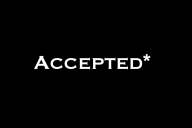You have /5 articles left.
Sign up for a free account or log in.
For many faculty members, spring 2021 marks only the second full semester of hybrid or online course modalities in response to the ongoing coronavirus pandemic. That means that we still have not mastered Zoom, Blackboard, Canvas and other teaching and digital classroom tools. They still feel foreign to many of us. The thought of wading through teaching for 15 more weeks as we navigate work from home, work-at-home obligations and duties induces anxiety and dread.
As academics, many of us -- especially those who are Black, Indigenous and people of color (BIPOC) and work in predominantly white institutions -- suffer from impostor syndrome on a regular basis, and we strive for perfection in teaching. Subsequently, the pressure to master different ways to teach courses is intense, and many of us will feel that the stakes have changed, and expectations are higher now that we have taught in hybrid course modalities for two semesters.
How can you alleviate this anxiety as you prepare for 2021? I offer three tips for BIPOC faculty for navigating this challenging moment based on my experience as a Black woman teaching African American and Africana studies, gender and women’s studies and political science courses for more than 10 years.
Set boundaries. First, set professional and personal boundaries for yourself and your students. BIPOC faculty and staff members are called upon to perform all sorts of invisible labor, which at many institutions does not count toward tenure. Many times, such interactions are with marginalized students. Our offices serve as safe spaces and our ears serve as sounding boards. We work as informal and formal mentors, often hearing students' most personal problems and professional dilemmas, which center around their experiences.
In particular, Black women faculty are often expected to be nurturing and giving, embodying what anthropologists Faye V. Harrison and Gina Athena Ulysse refer to as mammification. This is work that many of us undertake because someone did it for us, and we have joined the faculty at predominantly white institutions to be that someone for another marginalized student.
During the pandemic, I have found that this expectation has increased exponentially as senior administrators ask faculty and staff members to exercise compassion and grace for students due to our collective circumstances. Students take more liberties, sharing more personal information and challenges while simultaneously demanding more emotional support and compassion. This can easily turn into an untenable situation, as demands for service outside the classroom become greater.
That’s why it’s important to set boundaries and adhere to them in terms of your interaction with students beyond the classroom. Expect students, white and BIPOC, to incur more challenges in this difficult moment. Provide yourself and them with a list of resources that will help you direct them to the appropriate services and then withdraw from the situation. That will allow you to preserve your sanity and deal with both the professional and personal toll that the pandemic takes on us.
Resist additional labor. Second, resist the urge to do unrecognized and uncompensated labor, such as guest lectures, roundtables and workshops. At this moment of heightened awareness and discourse around racial inequity, racial inequality and the disproportion impact of COVID-19 on communities of color, we are often being called upon as the resident expert BIPOC faculty. Weigh these requests for your time and expertise carefully, and ask yourself how they dovetail with or distract from your scholarship and teaching. Save your energy and strength for things that will directly advance your promotion and align with your professional goals -- be it writing, research or teaching.
Review course evaluations (with some caveats). When prepping for class, ask yourself what you did well last semester and what you can do better. As mentioned earlier, for many of us this was our initial foray into course modalities that did not focus on face-to-face course instruction. The switch to online instruction in the spring of 2020 happened under great duress, and the quality of instruction reflected it. For those of us not used to teaching online, it felt difficult, clumsy and woefully inadequate. Many of us hoped that the switch would only be for the semester. It was not, as over the summer many institutions of higher education made the decision to continue online or hybrid instruction at least into the spring semester of 2020.
Fall 2020 looked significantly different than did the spring, as many folks used the summer to prepare for fall classes. Well, fall semester is over. How did it go?
One way to determine that is to look at student evaluation and feedback from the fall. While course evaluations of BIPOC faculty are fraught at best -- often reflecting students’ racism, sexism, homo- and transphobia, xenophobia and rancor -- some gems can be found in them in terms of student reactions to pedagogical tools employed in their classes.
How can approach your evaluations to find these gems? A graduate student colleague of mine shared excellent advice for looking at course evaluations. They suggested that you make a list of all the things you think you did wrong with the course before you open your course evaluations and then compare it to what students identified as course shortcomings. Inevitably, as instructors we are harder on ourselves and much more critical of our own work than students are.
Thus, as you view the evaluations and compare them to your own list, distance yourself a little from them. Regardless of the strategy you employ, try to remain detached as you view them with an eye for what did and did not work.
In a follow-up essay, I will offer additional strategies to help alleviate some of the anxieties we face when returning to the classroom in 2021.




